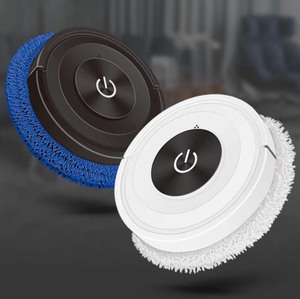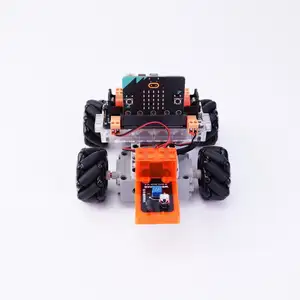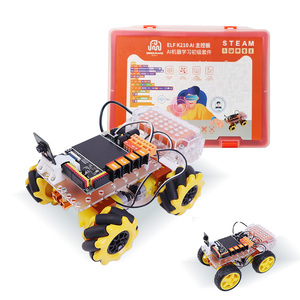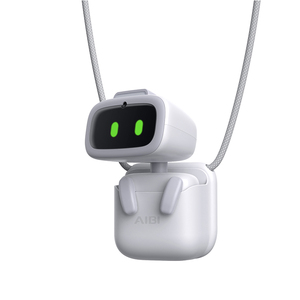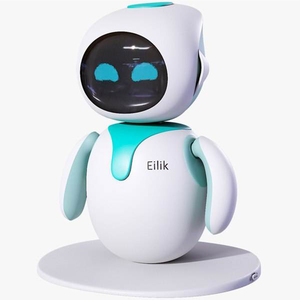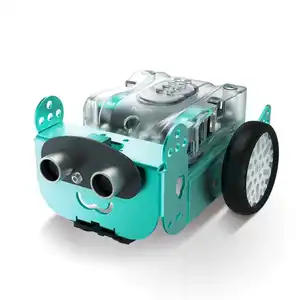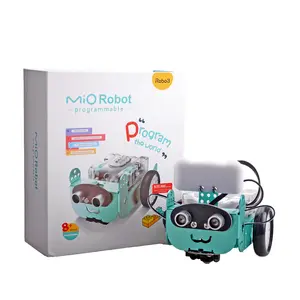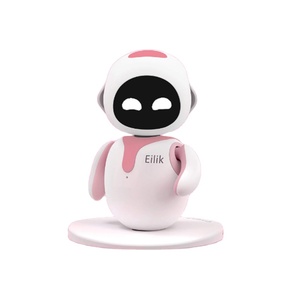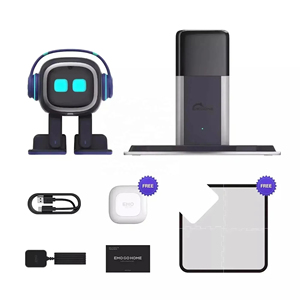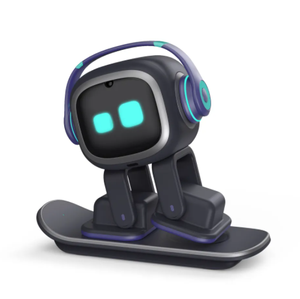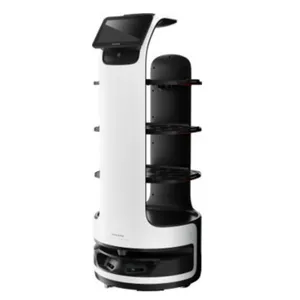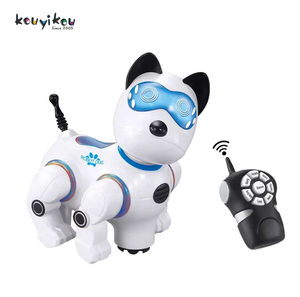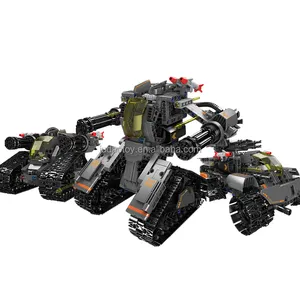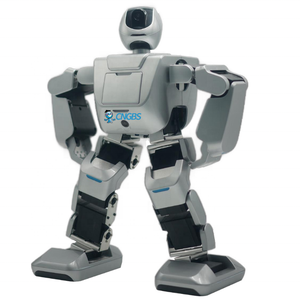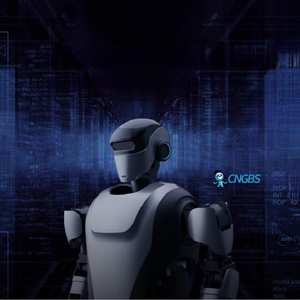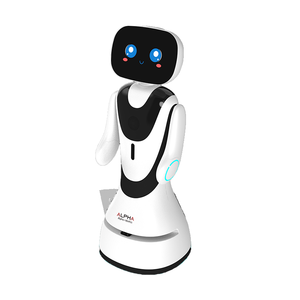Miko Robot




 1/2
1/2




 1/3
1/3




 1/3
1/3




 1/3
1/3



 0
0



 0
0




 0
0




 1/3
1/3




 1/3
1/3







 1/16
1/16



 0
0




 1/3
1/3




 1/3
1/3


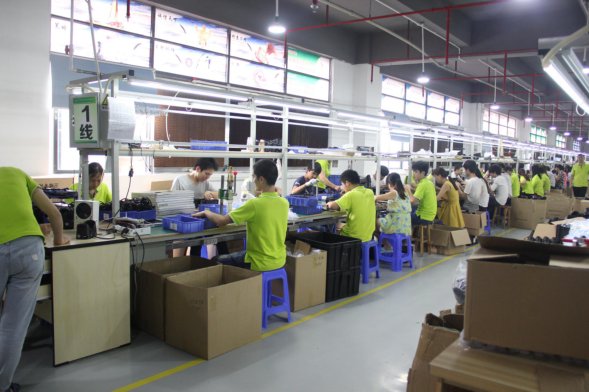

 1/3
1/3




 1/3
1/3





 1/3
1/3




 1/3
1/3




 1/3
1/3



 0
0






 1/2
1/2
About miko robot
Where to Find Miko Robot Suppliers?
China remains the central hub for Miko robot manufacturing, with key production clusters concentrated in Guangdong Province—particularly Shenzhen and Guangzhou. These regions host specialized electronics and robotics supply chains that support rapid prototyping, scalable assembly, and integration of AI-driven educational technologies. Shenzhen’s ecosystem excels in R&D-intensive smart toys and STEM kits, leveraging proximity to semiconductor suppliers and firmware developers, while Guangzhou focuses on consumer-grade robotic appliances with cost-optimized production.
The industrial infrastructure enables vertically integrated operations, where design, PCB fabrication, plastic injection molding, and final assembly occur within tightly coordinated networks. This localization reduces component lead times by 25–40% compared to offshore alternatives. Suppliers typically maintain monthly production capacities ranging from 10,000 to 50,000 units, depending on complexity, supported by automated SMT lines and QC testing stations. Buyers benefit from flexible MOQs as low as 1–2 pieces for sample validation and 10–24 units for initial orders, facilitating market testing and iterative product development.
How to Choose Miko Robot Suppliers?
Effective supplier selection requires structured evaluation across technical, operational, and transactional dimensions:
Product Specialization & Technical Alignment
Confirm alignment between supplier output and target application. Suppliers like Weeemake Steam Tech Co., Ltd. specialize in programmable STEM coding robots (e.g., Miko 2, Microbit V2 kits), featuring Bluetooth/Wi-Fi connectivity, sensor arrays, and app-based control. In contrast, Shenzhen Jellynew Technology Co., Ltd. focuses on AI-powered companion robots with voice interaction and emotional response algorithms. Verify firmware documentation, SDK availability, and compatibility with educational platforms before procurement.
Quality Assurance and Compliance
Prioritize suppliers whose products meet international safety and electromagnetic standards. While explicit certification data is limited in public profiles, buyers should request evidence of RoHS, CE, or FCC compliance for market entry in Europe and North America. Evaluate quality performance through available metrics: on-time delivery rates range from 92% to 100%, with top-tier suppliers maintaining 100% fulfillment records. Reorder rates above 25%—such as Weeemake’s 35%—indicate higher customer satisfaction and product reliability.
Production Scalability and Responsiveness
Assess operational capacity using proxy indicators:
- Response time under ≤2 hours suggests robust customer service infrastructure
- Online revenue exceeding US $200,000 signals established export activity
- Dedicated R&D teams implied by complex product variants (e.g., AI emotion engines, remote-control programming)
Cross-reference these with minimum order requirements—some suppliers require 10+ units for bulk pricing, while others allow single-unit trials—to align with demand forecasting models.
What Are the Best Miko Robot Suppliers?
| Company Name | Main Products | Price Range (USD) | Min. Order | On-Time Delivery | Reorder Rate | Response Time | Online Revenue |
|---|---|---|---|---|---|---|---|
| Guangzhou Miko Electronic Co., Ltd. | Robotic Vacuum Cleaners | $5.98–$22.98 | 1 piece | 92% | <15% | ≤2h | US $20,000+ |
| Weeemake Steam Tech Co., Ltd. | STEM Coding Robots, Educational Kits | $84–$189 | 1–2 sets | 92% | 35% | ≤2h | US $290,000+ |
| Shenzhen Jellynew Technology Co., Ltd. | AI Companion Robots, Smart Toys | $99–$429 | 1–2 pieces | 100% | 15% | ≤3h | US $120,000+ |
| Shenzhen Gomeng Technology Co., Ltd. | Eilik/MIKO Emo Robots, Learning Machines | $33.69–$408 | 2–24 pieces | 100% | 26% | ≤10h | US $40,000+ |
| Shenzhen Crownhaosheng Technology Co., Ltd. | Mio Programming Robots, RC Kits | $65–$75 | 5 sets | 92% | 19% | ≤3h | US $20,000+ |
Performance Analysis
Weeemake Steam Tech stands out for high-value educational robotics, combining a strong reorder rate (35%) with advanced STEM functionality and competitive pricing at $84/set. Shenzhen Jellynew and Shenzhen Gomeng demonstrate perfect on-time delivery (100%), indicating reliable logistics execution, though Gomeng’s slower response time (≤10h) may affect communication efficiency. Guangzhou Miko targets budget-friendly robotic cleaners but shows lower repeat purchase behavior (<15%), suggesting potential limitations in long-term customer retention. For premium AI companions, buyers should prioritize suppliers offering multi-modal interaction (voice, gesture, emotion simulation) and validated software updates.
FAQs
How to verify Miko robot supplier reliability?
Request proof of compliance with regional electronic safety standards (CE, FCC, RoHS). Analyze transaction history through verifiable revenue benchmarks and on-time delivery performance. Conduct video audits of production lines to confirm in-house assembly and testing protocols. Prioritize suppliers with documented post-sale support structures.
What is the typical lead time for Miko robot samples?
Standard sample fulfillment ranges from 7–15 days, depending on customization level. Shipping via express courier adds 3–7 days internationally. Complex configurations involving AI training or custom casing may extend timelines to 25 days.
Can suppliers accommodate private labeling and packaging?
Yes, most suppliers listed offer OEM/ODM services, including logo printing, branded packaging, and UI customization. Minimum thresholds vary—typically 500–1,000 units—with additional fees for design adaptation and tooling changes.
Are free samples available for Miko robots?
Free samples are uncommon for high-value units (e.g., $400+ AI robots). Suppliers often charge full or partial sample costs, which may be credited toward future bulk orders. Lower-cost models (under $100) may have trial programs for qualified buyers.
What customization options are available?
Suppliers support hardware modifications (battery capacity, sensor types), firmware adjustments (language packs, behavior scripts), and mobile app branding. For educational models, curriculum integration and classroom management dashboards are feasible with dedicated development cycles of 4–8 weeks.






